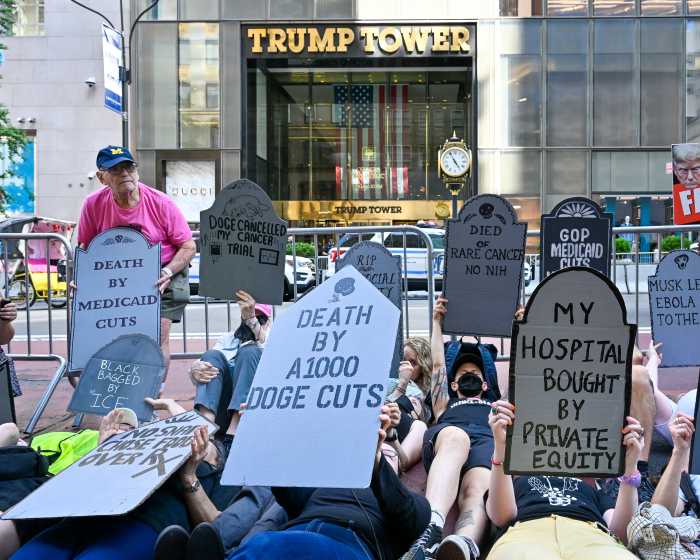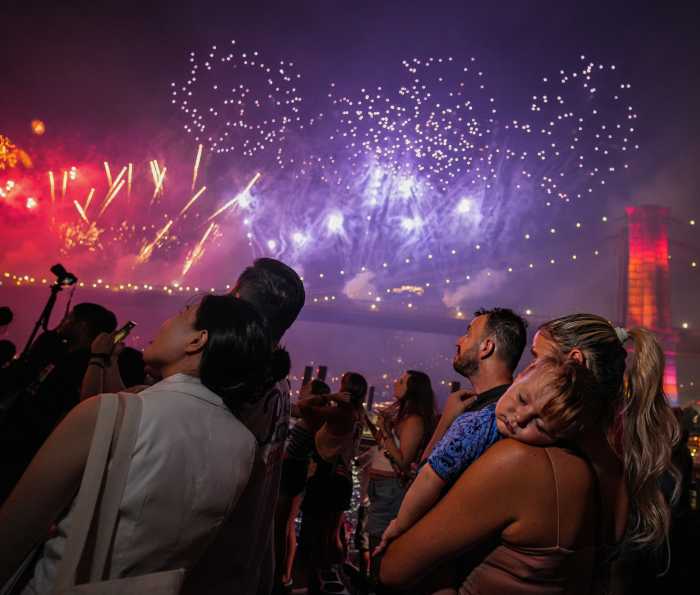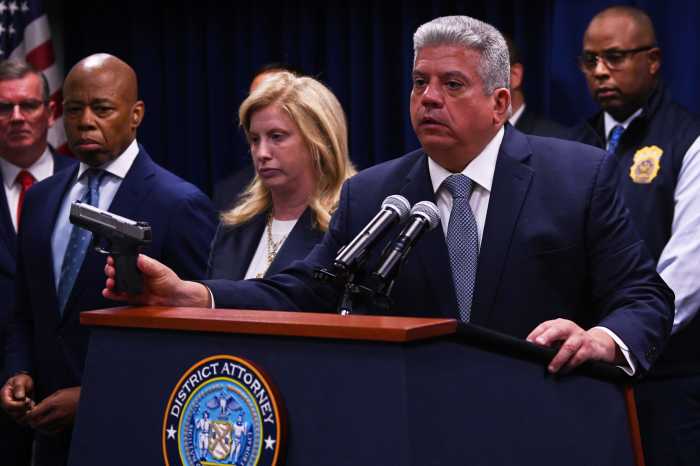City agencies have been getting savvier and more creative about using social media to govern and connect directly with New Yorkers.
Jessica Singleton, the city’s digital director, said the various Facebook, Twitter and Instagram accounts for departments have not only given them a quick, efficient and fun way to communicate with New Yorkers, but it’s also provided New Yorkers a better way to get involved as well.
She said the city makes it a priority to be innovative with its social media accounts and keeps pushing for ways to be more transparent, interactive and fun with its followers.
“It’s all about creating content that provides an opportunity for New Yorkers to learn something about government, to improve their experience with service delivery from government, or to create a conversation with them,” Singleton said.
Media experts say city agencies are already leading the digital charge worldwide and their strategies have been very successful in engaging New Yorkers.
“Everyone is on their phone and tablets and expecting their information there. Governments, like businesses, have to go where their constituents are,” said William J. Ward, a professor of Social Media at Syracuse University.
As the world marks social media day Monday, amNewYork talked to several city departments about how they are using digital networking to run the city and interact with you.
Citywide
Singleton said she and her team aim to build on the social media standard that began under Mayor Michael Bloomberg’s administration, which was active on Twitter, Facebook and Instagram during his three terms.
She said New Yorkers have always demanded speed and transparency with their government and this is the most efficient way to give them both.
“It’s our job to bring our message to New Yorkers where they are. Digital tools are the only way to do that,” she said.
Singleton said she’s tried to show a sense of collaboration and unity among the various agencies. For example, last week most of the Twitter accounts for New York departments changed their pictures to include rainbow colors to celebrate gay pride week.
“It’s very simple but it means something to a lot of people,” she said.
The director remarked that aside from the agency’s official pages, the city also promotes the accounts that belong to agency’s heads so that New Yorkers have a face to go with the department.
In particular, she said New Yorkers have reacted very positively to the mayor and first lady’s social media accounts and they will encourage more people to interact with the city.
“New York has always been a leader in this and we aim to continue innovating,” she said.
FDNY
Emily Rahimi, social media director for the fire department, said New York’s Bravest value Twitter and Facebook, especially when it comes to providing the public with an inside look into the department.
Aside from giving up-to-date information about fires and emergencies, Rahimi and her team also push out stories of firefighters daring operations and rescues like in May where they saved a 7-year-old boy who got stuck in a gate in Williamsburg.
“It’s great to show the public that they are always out there to help people with their lives,” she said.
Recently, the FDNY’s Facebook and Twitter account posted stories and pictures educating New Yorkers on fire safety. Rahimi said their followers have retweeted and posted many of their stories that provide tips on how to avoid dangerous incidents, like a recent post on BBQ safety.
“Hopefully they can step away from [their computer] and realize the simple things that cause a fire,” she said.
NYPD
The NYPD’s social media presence has been overhauled since Bill Bratton started his second stint as police commissioner this year.
Bratton joined Twitter on Jan. 23. Eventually precinct after precinct set up accounts on Twitter, each with photos of the station’s head officer. In addition to crime stats and alerts, the official NYPD and precinct accounts also give news about police helping civilians with smaller problems — like a tree down in Selfridge Street in the 112th Precinct in Forest Hills.
Paul Levinson, a professor of communication and media studies at Fordham University, said the NYPD’s social media boost is a good method to undo some of the damage done by the last administration and commissioner, who upset a lot of people over several controversies such as stop and frisk and the handling Occupy Wall Street.
“Bratton is setting a good example, because going back to the Giuliani administration he has been aware of the crucial link that people should have with the people,” he said.
Of course, going viral is not always a good thing.
When the city’s Finest started a Twitter campaign in April asking New Yorkers to share their favorite police moments with the hashtag #mynypd, the feed was filled with images of alleged police misconduct, photoshopped images and jokes mocking the department.
Levinson said the hashtag incident demonstrated that the NYPD still has a long way to go to improving their image, but the idea was a good start.
“That makes democracy more effective,” he said.
The NYPD didn’t return calls or messages for comment regarding its social media strategy.
Parks Department
The city’s parks department created a new media division in 2000 and it made its mark on social media nine years later when the it joined Facebook and Twitter.
Ian Lefkowitz, deputy director of new media for the parks department, said he uses the accounts to highlight the hidden gems like its pools, playgrounds and other facilities. He said their strategy has paid off because a lot of users react positively when they discover a new green space.
“It feels great when we see people on our Facebook or Instagram page talk in the comments of a picture of a park and say ‘Hey we should check this out,'” he said.
Lefkowitz said they are always looking for new ways to interact with parkgoers and look to other social media innovations for fun ideas. For example, the parks department put out interactive quizzes that determined which city park or beach a user is.
“It’s popular but also allows people to identify with a park,” Lefkowitz said.
Office of Emergency Management
Allison Pennisi, OEM’s senior communications and new media specialist, said the agency has put a lot of resources into its social media accounts because Facebook and Twitter are the first places New Yorkers turn to during emergencies.
“We have the capability of helping a wider audience. There is a huge population that is on social media now, and we’ve seen that reach expand,” she said.
Pennisi said for the last five years, OEM has not only put every single alert on social media during storms, power outages and other incidents but also passed on information received from its followers. The agency went into overdrive during superstorm Sandy when thousands — many of which had no power — looked to their smartphones for information.
“Social media proved to be a crucial part of our overall communication efforts. It was a way of informing the public of the storm itself, when it was moving and after it had left,” she said.
Moving forward, Pennisi said the agency has developed fun strategies to engage New Yorkers about emergency preparedness like its recent “know your zone” campaign that educates users on hurricane evacuations.
“Communication isn’t just picking the phone during an emergency, it’s about informing them during blue sky days too,” she said.




































